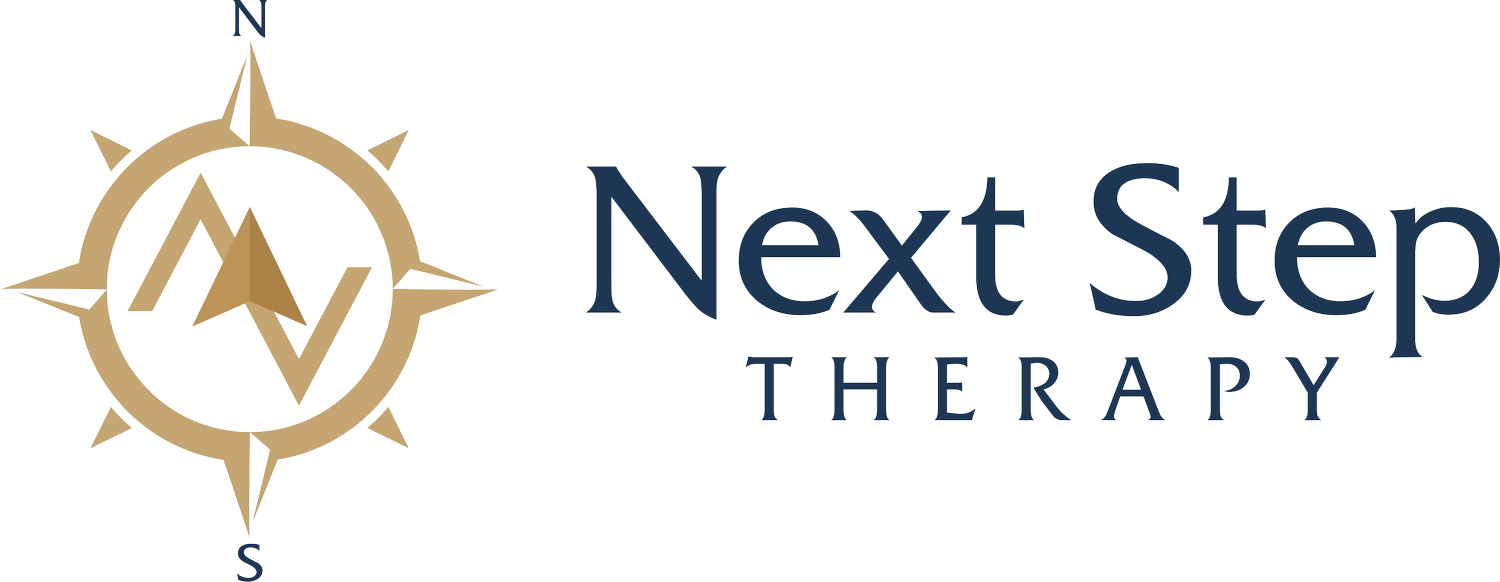How to Manage Performance Anxiety for Lasting Results
How to Manage Performance Anxiety for Lasting Results
Performance anxiety can affect anyone, from professionals to students, and it often shows up as fear, self-doubt, or physical symptoms like a racing heart. Rather than simply coping, imagine transforming anxiety into performance enhancement. At Next Step Therapy, we often use a depth-oriented framework (Performance Insight → Pattern Recognition → Strategic Intervention → Sustainable Integration) to help high-achieving professionals convert stress into meaningful gains.
- Quick fixes: Use breathing exercises like Box Breathing or Resonance Breathing to calm your nerves instantly.
- Turn anxiety into energy: Reframe stress as a tool for focus and motivation.
- Prepare effectively: Follow a step-by-step timeline to reduce tension before high-pressure moments.
- Daily habits for long-term relief: Practice mindfulness, gradual exposure to challenges, and reflection to build resilience over time.
- Seek professional help if needed: Emphasize an ACT-based approach or other methods like CBT for deeper, more sustainable change.
By focusing on the root causes of your anxiety and actively re-channeling that energy, you can thrive under pressure and continue excelling in your career.
Transforming Performance Anxiety into Professional Success
What is Performance Anxiety?
Performance anxiety in high-pressure, executive-level environments occurs when you experience intense emotional and physical reactions under critical demands—such as leading a major presentation, performing advanced medical procedures, or making swift legal decisions. Interestingly, this isn't about lacking skills—it’s your "worry system" going into overdrive [4].
Many outwardly successful individuals experience a form of high-functioning anxiety: They excel on the surface but wrestle with quiet self-doubt or fear of failure. At Next Step Therapy, we primarily lean on Acceptance and Commitment Therapy (ACT) to explore these underlying drivers, helping professionals not just mask symptoms, but transform them into career advantages.
Common Signs and Triggers
Performance anxiety surfaces in body, emotions, thoughts, and behaviors. Recognizing these patterns is essential:
| Response Type | Common Signs |
|---|---|
| Physical | Rapid heartbeat, sweating, shaking, dry mouth, muscle tension |
| Emotional | Fear, embarrassment, self-doubt, excessive worry |
| Cognitive | Harsh self-criticism, unrealistic expectations, focus on failure |
| Behavioral | Avoiding key tasks, withdrawing, reduced productivity |
Common workplace triggers include looming deadlines, major project milestones, high-stakes client negotiations, or heavy patient loads [5]. When these stressors become frequent, the root cause often lies in deeper perfectionism or imposter fears.
How Anxiety Works in the Body
When performance anxiety kicks in, it activates your body’s "fight-or-flight" response [2]. Dr. Theresa Callard-Moore, PhD, says:
"Performance anxiety falls under the umbrellas of anxiety disorders - like social anxiety, separation anxiety and generalized anxiety disorder. They all cause a heightened stress response that leads to feelings like intense fear and embarrassment or feeling overwhelmed." [7]
The result can be muscle tension, a racing heart, or feeling overstimulated. Over 8 million people cope with anxiety disorders, causing 70 million stress-related sick days [4]. Notably, research on musicians shows 50%–70% experience performance-related anxiety [6], hinting that the more pressure you feel to perform, the more intense anxiety can become.
Dr. Callard-Moore likens it to a pressure cooker:
"An anxiety response is like a pressure cooker. And we can use certain techniques to turn down that built-up pressure." [7]
Kremer et al [1] observed that pushing harder can worsen anxiety’s grip. Instead, focusing on deeper patterns and intentionally shifting how you relate to stress is key to breaking the cycle.
Strategic Interventions: Quick Relief Methods
Breathing & Centering in High-Pressure Moments
In ACT, we see breathing exercises not as mere relaxation tricks, but as strategic interventions for realigning your mental space. Dr. Jaswinderjit Singh, MD, underscores how mindful breathwork can stabilize professionals under serious demands [8]:
- Box Breathing: Inhale for 4 counts, hold 4, exhale 4, hold 4—repeat to calm your system.
- Resonance Breathing: Inhale for 6, exhale for 6, aiming for 5–6 breaths/minute. Slow, deep breaths help you re-center.
Turning Anxiety into Focused Energy
Once tension subsides, direct that adrenaline surge into productivity:
- Reframe: View a fast heartbeat or alertness as heightened readiness, not failure.
- Focus: Use precise, assertive language to set clear objectives—like closing a deal or handling a complex procedure.
- Align with Values: ACT encourages anchoring your actions to personal or professional values, transforming fear into motivation.
Preparation Steps for Better Performance
A structured timeline helps reduce pre-event anxiety:
| Time Before Performance | Action | Purpose |
|---|---|---|
| 24 hours | Limit caffeine & sugar | Reduce physical tension |
| 2 hours | Diaphragmatic breathing | Activate your calming system |
| 30 minutes | Light warmups | Release muscle tension |
| 10 minutes | Center yourself | Minimize distractions |
| 5 minutes | Visualization | Direct your energy |
Transform Challenges Into Growth
Discover evidence-based virtual therapy tailored to you. Overcome anxiety, optimize performance, and achieve personal growth with expert guidance.
Sustainable Integration: Long-Term Anxiety Management
For high-achieving professionals, short fixes alone rarely suffice. Sustainable Integration means addressing the deeper roots of anxiety—those hidden fears of inadequacy or perfectionism that keep stress on autopilot. Our ACT-driven, depth-oriented approach encourages consistent mindfulness, incremental exposure, and reflection so you can integrate calm and confidence into daily life.
Daily Mindfulness Practice
Research shows a consistent mindfulness routine can cut stress by up to 30% [12]. Even if you’re a busy physician, lawyer, or tech lead, a few deliberate minutes a day can rewire how you handle pressure:
| Time of Day | Practice | Duration | Purpose |
|---|---|---|---|
| Morning | Deep breathing | 5 minutes | Start the day calmly |
| Mid-day | Body scan | 3-5 minutes | Refocus & reset |
| Evening | Gratitude reflection | 10 minutes | Process daily wins |
| Before bed | Loving-kindness meditation | 5-10 minutes | Cultivate self-compassion |
Dr. Shapiro notes:
"Mindfulness has the potential to switch off or manage emotional reactivity to anxiety-inducing situations; it helps people pause, rise above the turmoil, see with greater clarity, and respond with freedom." [10]
Gradual Exposure for Sustainable Change
Facing tough scenarios incrementally fosters resilience. [13] indicates reframing failures can boost future success by 20%.
- Start small: Test new coping tools in low-stakes meetings or tasks first.
- Track progress: Keep a brief log of triggers, anxiety levels, and which methods work best.
- Step it up: Gradually handle higher-responsibility events as your confidence solidifies [12].
Addressing Root Causes
In ACT, we focus less on “fighting” anxiety and more on learning from it. As Dave Carbonell, PhD, explains:
"Performance Anxiety is what happens when you focus on yourself and your anxiety, rather than your presentation or performance... it stems from resisting anxiety instead of accepting and working with it." [3]
- Self-compassion: Swap harsh criticism for curiosity [11].
- Spot patterns: Identify repeated triggers or hidden beliefs about worth or failure.
- Shift focus: Concentrate on connecting with your audience or goal, rather than internal fear [3].
- Put lessons into action: Continuously refine your approach as you uncover deeper motivations.
Professional Help for High-Achievers
Many high-functioning professionals find that once anxiety starts undermining daily performance or overshadowing career ambitions, it’s time for specialized support. Studies suggest noticeable progress within 8 to 10 therapy sessions [16], especially with approaches like ACT that address deeper patterns rather than just symptoms.
When to Consider Therapy
If your professional or personal life is strained by anxiety—like feeling on edge 24/7 or second-guessing every decision—therapy can be a strategic advantage, not just a last resort. Talkspace therapist Amy Cirbus, PhD, LMHC, notes:
"Therapy can be beneficial for most anyone... It can also be approached from a maintenance perspective, a quick mental health tune-up to solidify healthy habits." [14]
We understand the unique challenges of high-pressure jobs. Our 50-minute virtual sessions, offered at times that fit a demanding schedule, blend advanced ACT-based strategies with firsthand insights into high-stakes environments. Rather than being one option among many, Next Step Therapy is designed to be your go-to resource for deeper, more sustainable anxiety transformation.
Our Approach: ACT & More
While we emphasize ACT, other methods can complement your growth:
- Mindfulness-Based Cognitive Therapy (MBCT): Ideal for integrating mindfulness in daily routines [15].
- Cognitive Behavioral Therapy (CBT): Helpful for reframing immediate thought patterns [16].
- Complementary tools: Biofeedback, muscle relaxation, and other mind-body techniques can enhance outcomes.
Most importantly, our depth-oriented lens ensures we tackle not just surface-level tension but the core beliefs fueling your anxiety.
Next Steps
Shifting performance anxiety into long-term professional success hinges on addressing its underlying roots—perfectionism, fear of failure, or imposter syndrome. By consistently applying ACT principles, mindfulness, and incremental challenges, you can transform fleeting fixes into enduring growth [2].
- Prioritize daily practice: Just 10–15 minutes of mindful breathing or reflection can recalibrate your day [1].
- Merge self-help with ACT-based therapy: Reinforce personal strategies through regular, focused sessions [1].
- Build a supportive network: Seek colleagues and peers who value mental well-being [17].
"It is best to practice some type of relaxation technique every day... so that the skill is there for you when you need it." [2]
Ready to reshape anxiety into professional advantage? Next Step Therapy offers a free 15-minute consultation to explore how our depth-oriented, ACT-focused approach can serve as your strategic edge. Take one small step today, and watch your confidence and performance grow in ways that truly last.


For immediate crisis support, please contact local emergency services or a crisis line. While we provide ongoing therapeutic support, we are not an emergency service.
CLINIC HOURS
- Monday
- -
- Tuesday
- -
- Wednesday
- -
- Thursday
- -
- Friday
- -
- Saturday
- Closed
- Sunday
- Closed
Smart Site Design & SEO Services by Green Lotus Agency









